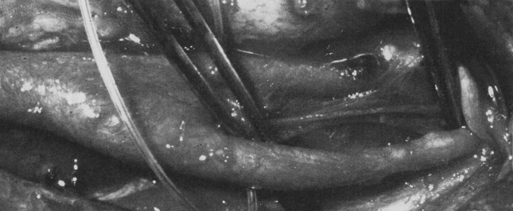Open surgical therapy for extracranial internal carotid artery fibrodysplasia includes resection of the diseased vessel with interposition grafting, angioplasty with patch grafts for focal lesions, and graduated intraluminal dilation. Operative exposure of the carotid vessel in these cases usually requires dissection of the entire internal carotid artery to within a few centimeters of the base of the skull (Figure 1). Care must be used not to cause injury to cranial nerves IX, X, XI, and XII.
Open Surgical Treatment of Fibromuscular Dysplasia of the Carotid Artery
Operative Techniques

![]()
Stay updated, free articles. Join our Telegram channel

Full access? Get Clinical Tree


Thoracic Key
Fastest Thoracic Insight Engine
